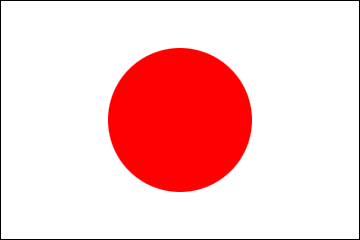JET Programme Series: Eleven Months Down and Still All In - Michael Simon
2022/11/4
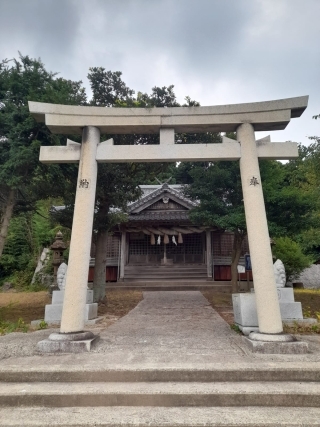
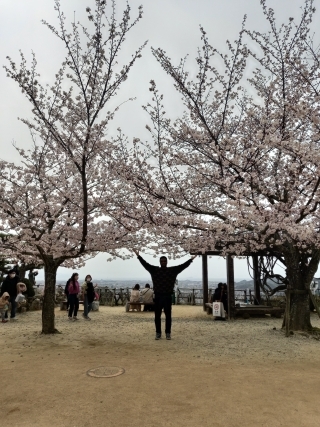
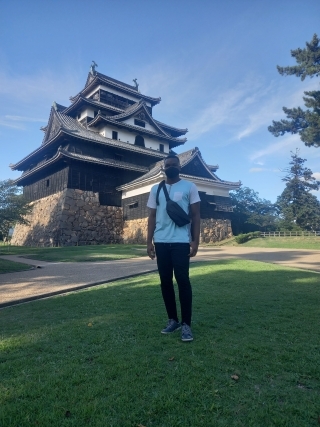
JET Programme Series: Eleven Months Down and Still All In - Michael Simon
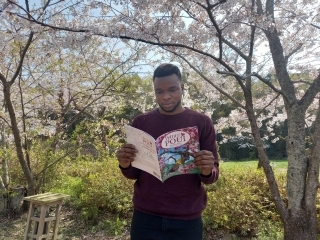
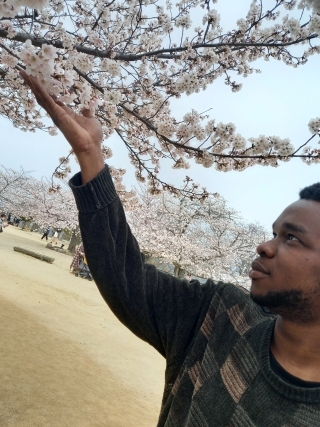
Eleven months flew by so quickly and I honestly do not know where the time went. Yesterday I wore layers of clothing to navigate through the harsh winter conditions, I blinked and then I was wearing sleeveless t-shirts to cope with the sweltering summer heat, I blinked again and today, I wear light long sleeve sweaters during the mild autumn conditions. I guess the adage is true, “time flies when you’re having fun.” I am slightly confused because even though I feel like I have done so little in Japan, on reflection, I have experienced and done quite a lot in eleven months.
During my eleven months in Japan, even though I visited a few shrines in the Oki islands, there were two shrines that had me awestruck: the Uzuka Shrine, and the Oki Shrine. The Uzuka Shrine is located 10 minutes walking distance from where I live. The shrine is small and surrounded by rice fields. Stepping into the shrine gave me chills. I felt like I stepped back in time to the Meiji Era; absolutely untouched by the modern world. It gave an authentic Japan feel. (Anyone who has ever seen Rurouni Kenshin knows exactly the ‘feels’ I am talking about) The Oki Shrine, when compared to the Uzuka Shrine is quite big. The Oki shrine has a rich history that is connected to the late emperor Go-Toba who was exiled to the Oki islands. The entrance to the shrine has a long walkway with Sakura Flower trees on both sides, and at the end of the walkway is a stairway to the shrine. I was thoroughly surprised that a small island (smaller than the size of Chaguanas) can have such a big, beautiful shrine.
Japan has a total of 12 original castles that were neither destroy nor damaged over the years and I happened to visit two of them without knowing they belong to the original 12. The first was Matsuyama Castle. From afar, the castle looks like it sits perfectly atop Matsuyama City. In order to get to the castle, I took a chairlift. It was a scary experience because of the distance between the chair and the ground. Also, the chair had no seatbelt! (I kid you not, I took the cable car on my return trip.) When my feet were planted on the ground, I was able to put my focus back on the castle. The castle is so anciently beautiful. I could imagine people walking away or toward the castle during the Edo period. The blossoming Sakura flowers made the surroundings so picturesque. I think there were more than 100 Sakura flower trees. This experience is one that I will never forget. During the summertime, I went to Matsue castle. It is not as large as Matsuyama Castle, but the visit was very much worth it. I toured the castle and I was able to see the city from above just like Matsuyama Castle. Seeing Matsue City from above reminded me of Port of Spain, not that Matsue City looks like Port of Spain, but the size of Matsue City is what brought Port of Spain to mind. Memories like that make me a little homesick.
Though I am very grateful to be in Japan, I cannot help but miss certain aspects of my country. Trinidad and Tobago is my home, and I think about home every day. I miss going to the doubles stand when the craving kicks in. I also wish that I can eat the occasional bus-up shot whenever I want to. Japanese rice is not the same as home. It is sticky which prevents me from making my beloved Pelau. I also miss hearing the Trinidadian dialect in all its natural glory. When I am doing tasks in my apartment, or when I speak to my fellow Trinis, I make sure to “talk Trini.” Yes, I miss my friends and family, but technology has made it quite easy to communicate with them. The only difficulty that comes between keeping up with friends and family is the 13-hour time difference.
To cope with missing home and culture shock, I made new friends on the island. My neighbour often gives me fruits and vegetables and we also make fried bake together. I was able to give him his first experience with dhal, and he also shares stories about the island and the local dialect in Ama Town called “Ama ben.” I also meet with friends so that we can eat dinner together weekly. They make Japanese food, and I make Trinidadian food. After I finessed their palette (according to them..lol) with stewed beef, potato salad, lentil peas, fresh salad, and rice, they were convinced that I was a chef in my past life. I also try to cook as much Trini foods as I can to make myself feel at home.
Though missing home and culture shock are very much real, they are a natural part of the worthwhile journey of being an ALT in Japan. Through the culture shock, language barrier, and missing home I am thankful for the opportunity of working and living in Japan. I do not mind sounding like a broken record when expressing my gratitude for being here. The journey is just as fulfilling as I imagined it to be. Eleven months down and still all in.
JET Series: Eleven Months Down and Still All In (Japanese Embassy's Facebook)
JET Programme Series Archives
During my eleven months in Japan, even though I visited a few shrines in the Oki islands, there were two shrines that had me awestruck: the Uzuka Shrine, and the Oki Shrine. The Uzuka Shrine is located 10 minutes walking distance from where I live. The shrine is small and surrounded by rice fields. Stepping into the shrine gave me chills. I felt like I stepped back in time to the Meiji Era; absolutely untouched by the modern world. It gave an authentic Japan feel. (Anyone who has ever seen Rurouni Kenshin knows exactly the ‘feels’ I am talking about) The Oki Shrine, when compared to the Uzuka Shrine is quite big. The Oki shrine has a rich history that is connected to the late emperor Go-Toba who was exiled to the Oki islands. The entrance to the shrine has a long walkway with Sakura Flower trees on both sides, and at the end of the walkway is a stairway to the shrine. I was thoroughly surprised that a small island (smaller than the size of Chaguanas) can have such a big, beautiful shrine.
Japan has a total of 12 original castles that were neither destroy nor damaged over the years and I happened to visit two of them without knowing they belong to the original 12. The first was Matsuyama Castle. From afar, the castle looks like it sits perfectly atop Matsuyama City. In order to get to the castle, I took a chairlift. It was a scary experience because of the distance between the chair and the ground. Also, the chair had no seatbelt! (I kid you not, I took the cable car on my return trip.) When my feet were planted on the ground, I was able to put my focus back on the castle. The castle is so anciently beautiful. I could imagine people walking away or toward the castle during the Edo period. The blossoming Sakura flowers made the surroundings so picturesque. I think there were more than 100 Sakura flower trees. This experience is one that I will never forget. During the summertime, I went to Matsue castle. It is not as large as Matsuyama Castle, but the visit was very much worth it. I toured the castle and I was able to see the city from above just like Matsuyama Castle. Seeing Matsue City from above reminded me of Port of Spain, not that Matsue City looks like Port of Spain, but the size of Matsue City is what brought Port of Spain to mind. Memories like that make me a little homesick.
Though I am very grateful to be in Japan, I cannot help but miss certain aspects of my country. Trinidad and Tobago is my home, and I think about home every day. I miss going to the doubles stand when the craving kicks in. I also wish that I can eat the occasional bus-up shot whenever I want to. Japanese rice is not the same as home. It is sticky which prevents me from making my beloved Pelau. I also miss hearing the Trinidadian dialect in all its natural glory. When I am doing tasks in my apartment, or when I speak to my fellow Trinis, I make sure to “talk Trini.” Yes, I miss my friends and family, but technology has made it quite easy to communicate with them. The only difficulty that comes between keeping up with friends and family is the 13-hour time difference.
To cope with missing home and culture shock, I made new friends on the island. My neighbour often gives me fruits and vegetables and we also make fried bake together. I was able to give him his first experience with dhal, and he also shares stories about the island and the local dialect in Ama Town called “Ama ben.” I also meet with friends so that we can eat dinner together weekly. They make Japanese food, and I make Trinidadian food. After I finessed their palette (according to them..lol) with stewed beef, potato salad, lentil peas, fresh salad, and rice, they were convinced that I was a chef in my past life. I also try to cook as much Trini foods as I can to make myself feel at home.
Though missing home and culture shock are very much real, they are a natural part of the worthwhile journey of being an ALT in Japan. Through the culture shock, language barrier, and missing home I am thankful for the opportunity of working and living in Japan. I do not mind sounding like a broken record when expressing my gratitude for being here. The journey is just as fulfilling as I imagined it to be. Eleven months down and still all in.
JET Series: Eleven Months Down and Still All In (Japanese Embassy's Facebook)
JET Programme Series Archives
